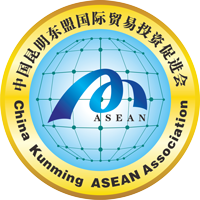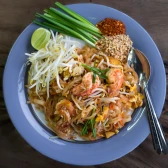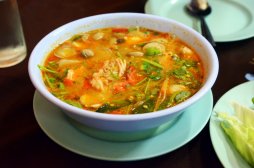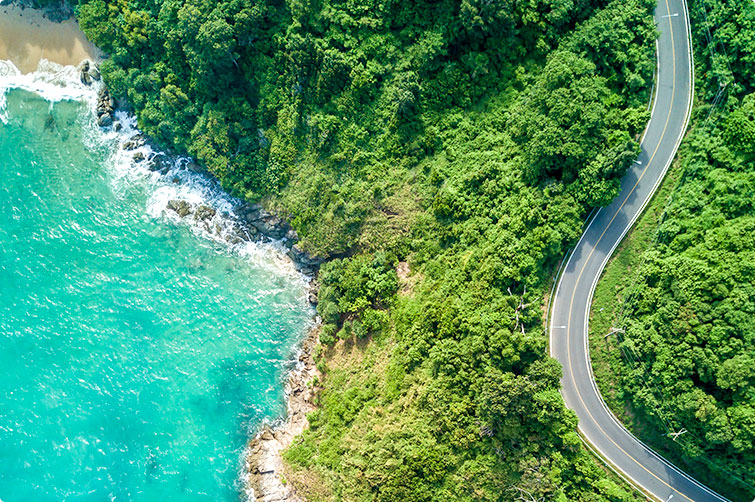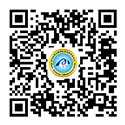Thailand's natural resources mainly include potassium salt, tin, tungsten, antimony, lead, iron, zinc, copper, molybdenum, nickel, chromium, uranium, etc., as well as barite, gemstone, oil, natural gas, etc. Among them, the reserves of potash rank first in the world. Mineral resources Thailand's mineral resources are divided into three categories, namely fuel ores, metallic ores and non-metallic ores. Fuel mines are natural gas, oil, coal and oil shale. Metal minerals are tin, tungsten, antimony, lead, manganese, iron, zinc, copper and molybdenum, nickel, chromium, uranium, thorium and so on. Non-metallic minerals include fluorite, barite, gypsum, rock salt, miscellaneous salt (carnallite), phosphate, high clay, graphite, asbestos, limestone and marble. Fuel mines Since the 1980s, Thailand has successively discovered natural gas and oil in the Gulf of Thailand and inland. According to private bank estimates, Thailand's maximum reserves of natural gas are 546.5 billion cubic meters, and the maximum reserves of oil (including natural gas condensate) are 164 million tons. Among the 15 discovered gas fields and oil fields, the total reserves of natural gas are 365.95 billion cubic meters, and the total reserves of oil (including natural gas condensate) are 25.59 million tons. Thailand's coal is mainly lignite and bituminous coal, with total reserves of more than 1.5 billion tons, of which 860 million tons are proven reserves and 680 million tons are probable. About 80% of the coal resources are distributed in Chiang Mai, Lamphun, Tak, Phrae and Chengyi in the north, and the rest are distributed in Surat Thani, Trang, Krabi in the south and Ke Lak and Kalasin in the northeast. government. Metal ore Tin is the most important mineral in Thailand, with reserves of 1.5 million tons, ranking first in the world. Tin mines are mainly distributed in Chumphon, Ranong, Phang Nga, Phuket, Surat Thani, Nakhon Khun, Trang, Songkhla, Yala and Pattani in the south. The tin ore in Thailand is tin dioxide ore, most of which are black and brown ore, and the rest are red and yellow ore. The tin ore is mostly associated with ilmenite, zircon, monazite, tungsten, and niobite. Tungsten is an important mineral product second only to tin. It is mainly distributed in Chiang Rai, Chiang Mai, Mae Hong Son, Phra, Tat, Lampang, Kanchanaburi and southern Nakhon Si Nakhon, Bashu, Phuket and other tin mining areas. Tungsten and ferromanganese, as well as tungsten and tungsten, are found in igneous rocks and granites in the western mountain range from north to south. Antimony ore is distributed in Lamphun, Lampang, Phra, Surat Thani, Chonburi, Trang, Nakhon Khun, Chanthaburi and Kanchanaburi, mainly including antimony and antimony. Almost all provinces have iron ore, with proven reserves of 46.73 million tons, including hematite, magnetite and limonite. Galena reserves are not much. Zinc mines are mainly distributed in Tat, Kanchanaburi and Lei, and there are four kinds of sphalerite, smithsonite, hemimorphite and red zinc ore. Copper mines are mainly distributed in Ke Lak, Cheng Yi, Li and Khon Kaen, including chalcopyrite, azurite, malachite, and cuprite. There are many kinds of manganese ore, mainly including pyrolusite, drusenite, rhodochrosite, rose pyroxene, as well as hydromanganese, cryptopotassium and limonite. Lamphun, Narathiwat, Rayong, Lai, Lampang and other provinces are distributed. The distribution of other metal mines is: Molybdenum, tungsten, calcium and nickel mines in Chanthaburi and Prachin; chromite mines in Chengyi; , Ranong, Phuket and other provinces have thorium mines. Non-metallic mines Thailand is an important producer of fluorite in the world, with fluorite reserves of about 11.5 million tons and barite reserves of 35.53 million tons. Gypsum is produced in Phichit, Nakhon Suwang, Lampang, Ke Lak, Cheng Yi, Surat Thani and other provinces. Rock salt is distributed in the northeastern provinces of Chaiyaphong, Ke Lak, Mahasarakham, Ubon Ratchathani and Udon Thani, with reserves of 2.9 billion tons; potassium carbonate is between the rock salt layers of the above-mentioned origins, and only the reserves of Chaiyapong Province are 2.9 billion tons. 240 million tons. Other non-metallic minerals are found in the following places: Phosphate in Ratchaburi, Prachuap, Lampang. Lampang, Cheng Yi, Ranong and other prefectures have Gao Cen soil. Graphite is available in Chanthaburi, Chiang Mai, and Bashu. Cheng Yi House has asbestos and talc. There are limestones in Saraburi, Nakhon Pathom and Phetchaburi. Sukhothai, Shaoraburi, and Nakhon Sawan have marble. Ratchaburi, Chiang Mai, Mae Hong Son province has feldspar, Kanchanaburi, Chonburi province has dolomite. In addition, there are pyrophyllite and calcite. Gems include ruby, sapphire, emerald, topaz spinel, tourmaline, zircon, quartz, emerald, etc. ruby and sapphire are the most famous, and the main producing areas are Chanthaburi, Trat, Shishaju, Kanchanaburi and Phrae province, which accounts for about 70% of the country's gem production in Thaburi province.
